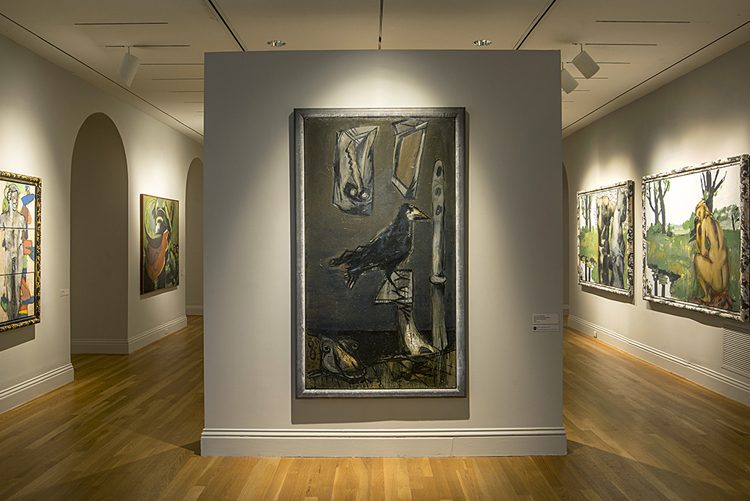
Installation view of the Markus Lüpertz exhibition. At center is Il corvo che filosofa (The Raven Philosopher), 1990.
Of all living painters, Markus Lüpertz resembles most closely what in German is called a Künstler-Philosoph, an artist-philosopher. The term was first used by the German philosopher Friedrich Nietzsche for his vision of a higher concept of art, one that is essentially “a metaphysical activity.” For Nietzsche, art and philosophy thus are intertwined. He once said that “in all of philosophy, what is missing until now is the artist.” Lüpertz, who in his paintings and in his own writings refers frequently to Nietzsche, has insisted that there is a distinction between philosophers and artists: the former question the world, while the latter question itself. Yet, like Nietzsche’s expanded vision of art, Lüpertz’s paintings straddle the Apollonian and the Dionysian, the idealized world of representation through form and beauty on the one hand, and the contradictions and pain of human existence on the other.
Lüpertz’s painting The Raven Philosopher, composed as a studio still life with various props, depicts a symbol of melancholy as much as wisdom. Like the black bird in Edgar Allen Poe’s poem “The Raven,” Lüpertz’s philosophizing raven depicts both death and beauty, and it could be read a portrait of the artist.
But ultimately, as an artist who compels us to see his representational paintings as mere abstractions, Lüpertz insists that “in painting the truth can only be the canvas, the paint itself.”
Klaus Ottmann, Deputy Director for Curatorial and Academic Affairs
